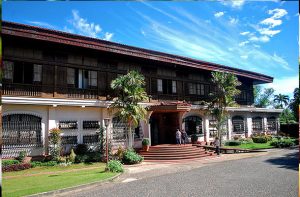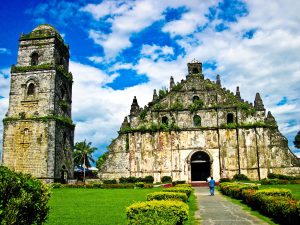History
When the Spaniards came to the country, especially in the town of Laoag, they observed that the inhabitants were organized into communities. They were also surprised to see that the total population of the whole area reached up to 6,000. This was the greatest number of inhabitants in a “barangay” or “purok” in the whole country. The houses were made up of bamboo and cogon.
The Spanish colonization of the region, however, was never completely successful. Owing to the abusive practices of many Augustinian friars, a number of Ilocanos revolted against their colonizers. Noteworthy of these were the Dingras uprising (1589) and Pedro Almasan revolt (San Nicolas, 1660). In 1762, Diego Silang led a series of battles aimed at freeing the Ilocanos from the Spanish yoke. When he died from an assassin’s bullet, his widow Gabriela continued the cause. Unfortunately, she too was captured and hanged.
Population/ Language/ Area
Its ethnic population is overwhelmingly Ilocano. Unlike the rest of the region, however, the Roman Catholic Church does not predominate.
The central part of the city is predominantly lowland with a sloping terrain of five to ten feet above sea level. From the northeastern part of the city going west to Dibua are virgin hills diminishing in height from fifty two (52) feet to ten (10) feet above sea level.
The climate of Ilocos Norte, which includes Laoag City, is generally classified as belonging to the first type of Philippine climate. Characterized by two well-pronounced seasons; dry and wet and is classified as mild and pleasant climate. Dry season usually starts in November until April and wet during the rest of the year. The city is shielded from northeast monsoon and trade winds by the mountain ranges of Cordillera and Sierra Madre but it is exposed to the southeast monsoon and cyclone storms.
Laoag City has a total land area of 12,747.35 hectares or 127.4735 square kilometers distributed among residential, commercial, industrial, agricultural, bodies of water, roads and bridges, open spaces and other land uses of the 80 barangays.
Products and Services
 An old Ilocano favorite is the “pinakbet” which literally means to “wrinkle” the vegetables by overcooking it; “Poki-poki” which is an eggplant omelet mixed with tomatoes; “bagnet” which is a tasty version of lechon kawali; “sinanlao” which is a watered down batchoy; “higado” which is similar to but less spicy than bopis; “popotlo” a seaweed salad found only in the region; crispy dinuguan, which is a dry dinuguan mixed with bagnet and other vegetables.
An old Ilocano favorite is the “pinakbet” which literally means to “wrinkle” the vegetables by overcooking it; “Poki-poki” which is an eggplant omelet mixed with tomatoes; “bagnet” which is a tasty version of lechon kawali; “sinanlao” which is a watered down batchoy; “higado” which is similar to but less spicy than bopis; “popotlo” a seaweed salad found only in the region; crispy dinuguan, which is a dry dinuguan mixed with bagnet and other vegetables.
Tourist Spots
- Cape Bojeador Lighthouse – built in 1892, which is 45 kilometers north of Laoag City. This is currently used.
- Ermita Hill – an overview of the whole city can be seen atop this hill.
- The Directors Quarters – situated in Badoc community where it houses the memorabilia of the Luna family including the paintings such as the replica of Spoliarium.
- Malacañang of the North – the official residence of President Marcos in Ilocos Norte. It overlooks the Paoay Lake. This residence has now been turned as a museum.

- Pagudpud Beach – this is a long stretch of shoreline and fine sands.
- Paoay Church – this church in included in the UNESCO’s World Heritage List, being built in coral blocks and has a unique architecture of Gothic, Baroque and Oriental.

- Windmills of the Northwind Power Development Corporation – these are like giant electric fans powered by winds from the sea. This wind farm produces 25 megawatts, enough to supply 40% of the electricity needs of Ilocos Norte.
